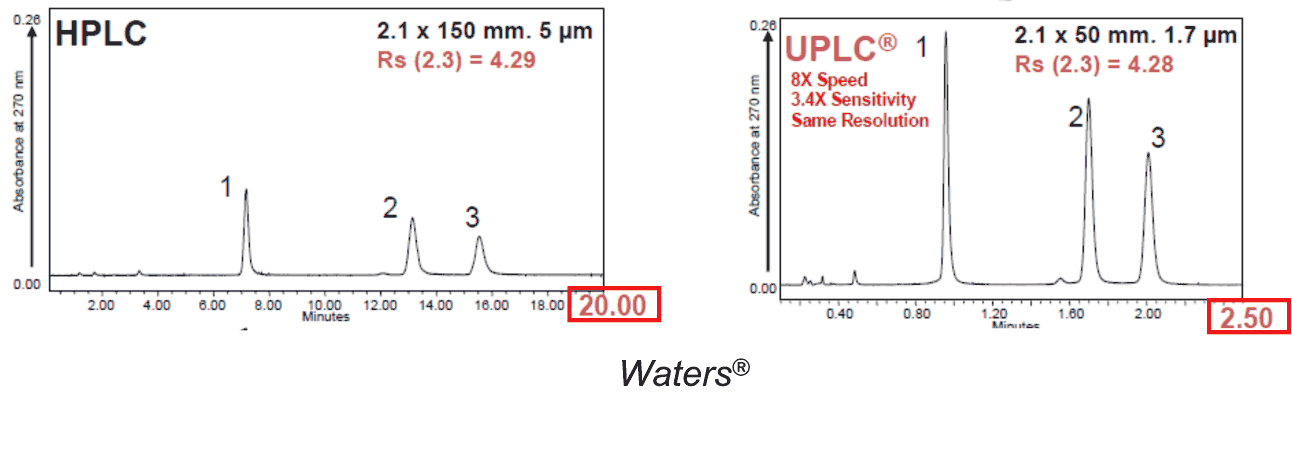The element that allowed liquid chromatography to pass from high performance (HP) to ultra-high performance (UHP) is the pumps’ capacity to withstand pressures in excess of 415 bar. With UHPLC, pressures can exceed 1,000 bars and recent systems can even reach 1,500 bars (pressure equivalent to the lowest point of the world’s oceans, 11km deep).
The pumps’ resistance to the pressure of UHPLC systems has has made it possible to use columns packed with increasingly fine particles. The first UHPLC columns used 2 µm particles (generating 600 bars of pressure with water circulating at 400 µL/min) whereas more recent columns reach 1.5 µm (generating 1,300 bars of pressure under the same conditions).
UHPLC has allowed a reduction of analysis time in liquid phase chromatography while maintaining satisfactory compound separation (see figure: the three compounds are separated in 2.5 min by UHPLC instead of 20 min in HPLC, while maintaining the same resolution between peaks 2 and 3).

The table below lists the advantages and drawbacks of UHPLC compared to HPLC.
| Advantages | Drawbacks |
|---|---|
| Flow-rate reduction (from ≈ 1 mL/min to 0.02 – 0.4 mL/min) | More expensive instruments and columns |
| Analysis time reduction (from 30 – 45 min to 5 -10 min) | More frequent maintenance |
| Same resolution as HPLC | Shorter column lifespan |
| Higher peak capacity | |
| Better peak intensity (detection limit) |





